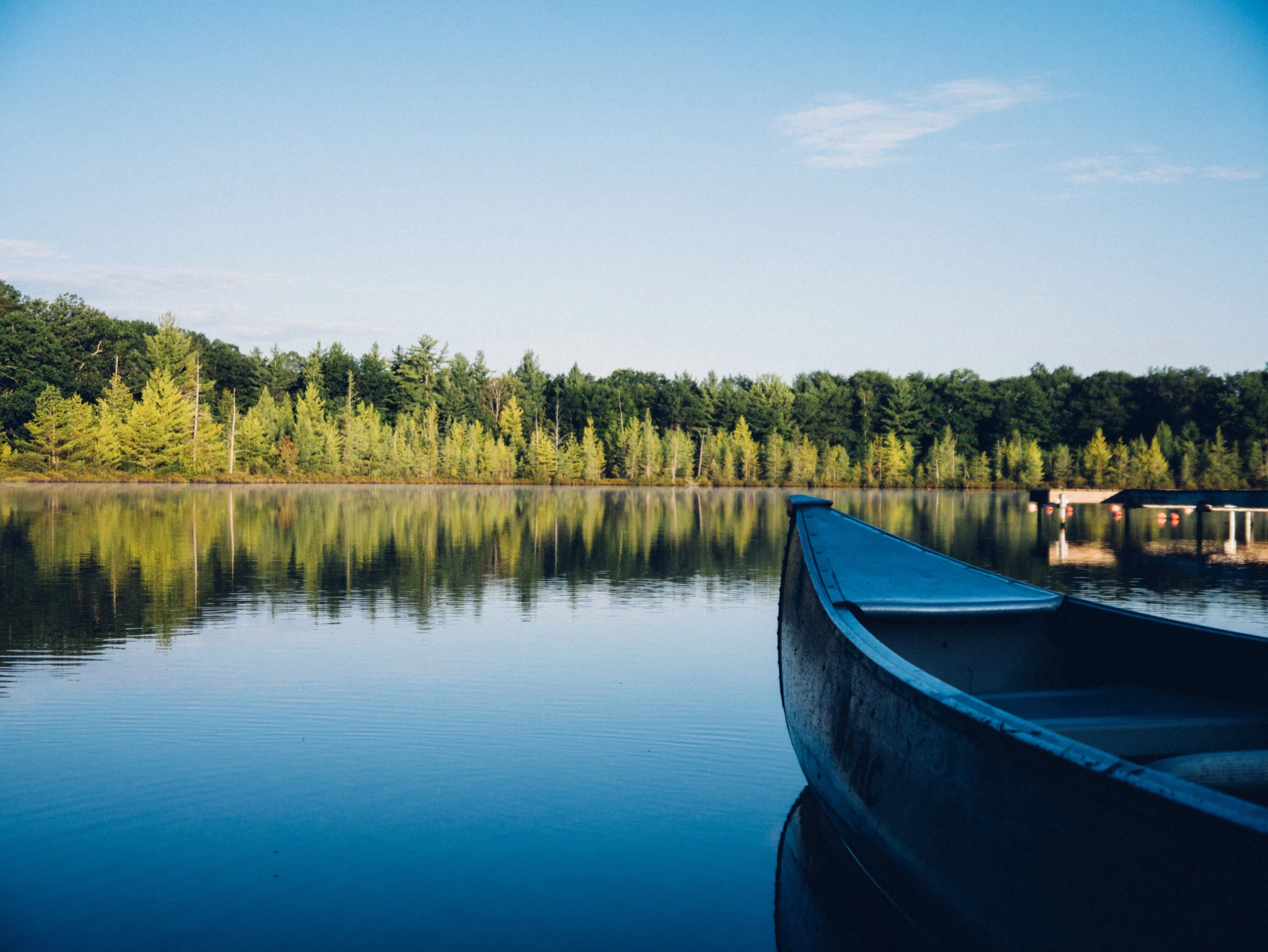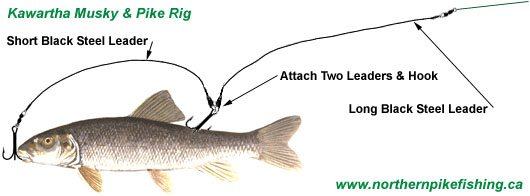
Pike Fishing Techniques & Best Pike Lures
There are many places where you will find Northern Pike in Northwestern Ontario Lakes. Generally, you will find small to medium size Pike in the back of bays where there is thick weeds, lily pads, and wild rice. The small to medium size Pike are feeding on small minnows, bugs, frogs, and each other. When you come out to the edge of the weeds, the Pike will get bigger because the Pike have the food of the bay to their back and also have the chance of taking a small Walleye swimming by the outside of the weeds.
Big Pike generally do not bother with small minnows, frogs, and bugs. Their main food is Walleyes, small hammer-handles, Suckers, Chub, and Whitefish. The big Pike will hang out where they can ambush Walleyes. The prime ambush area is points leading into bays. They will also hang around rocky points, shoals, islands and other places where there are Walleyes. The best place to get a big trophy Pike is at the mouth of a stream or river, narrows between islands and water-flow between lakes. The big Pike just sit there waiting for Walleyes to swim through. Walleyes tend to migrate around a lake all year, whether it’s moving to find cooler water, deeper water, more food, or even finding their spawning grounds.
Let us help plan your next fishing adventure!
We can accommodate singles, families, or groups with up to 10 people in one cabin.
Casting a DareDevil
One very effective way to maximize the attraction of a DareDevils or other spoons is to slap them. What you do is cast towards your target zone but cast up high so your lure falls into the area you want to fish. When the lure is about 2 or 3 feet above the water, jerk your line towards you. This makes the lure slap on the surface. If you are doing it right, you can hear the DareDevil slap. The sound of a spoon slapping on the surface seems to attract Pike and/or trigger a feeding response.
In Northwestern Ontario, there are generally three types of water. Some lakes are so clear that you can see the bottom 80 feet down. Other shallow lakes can be murky or muddy for days or weeks after a big storm. Many lakes have a wine-red color, which is caused by dissolved iron in the water. With clear water, the red and silver color works best. With muddy or iron-rich water, a yellow Five-of-Diamonds DareDevil seems to work better. In muddy or iron-rich water, rattle baits are even better as the Pike can locate the lure by sound.
Musky and Northern Pike look very similar. Did you know that they are not genetically related? They look the same because they evolved in similar environments. Walleye (Yellow Pickerel) and the Yellow Perch are related even though they look very different.
Using Old Rapalas With Your DareDevil

Do you have a Rapala that’s all chewed up or the little plastic fin broke off? You don’t have to turn it into a key-chain or throw it in the garbage. It’s still very useful.
Nothing gets a big monster Pike PO’ed more than watching another fish trying to eat. Northern Pike are extremely competitive and like to assert their dominance in the food chain. When a Pike sees a fish chasing another fish, it’s time for lunch.
With this in mind, take the hooks off your broken Rapala. Then attached a black steel leader. Then attach another leader to the back of the Rapala with a spring-slip-ring. Then attach your DareDevil or what ever you want to use.
This rig is another way of triggering that animal feeding instinct. It’s an old Muskie fishing trick.
Kawartha Musky Rig With Big Minnows

The big trophy Northerns are not feeding on bugs and little minnows. They are feeding on 1/2 to 2 lb Walleyes. A big Pike will spend too much energy chasing little bits of food. With this in mind, it’s time to look at your bait. Most bait stores will not carry 6 to 8 inch Chub or Suckers but that’s what you need. Get some 4 lb test line and really tiny hooks and find a small stream. Walk down the stream until you come to a hole and fish for Chub/Suckers with a little piece of worm. Just about every small stream in Canada has Chub or Suckers in it and they are easy to catch.
A big Chub on a traditional Kawartha Musky rig is how you catch the big ones. To make a Musky rig, you need two steel leaders and two medium size treble hooks. Clip the hooks onto the two leaders. Then clip the two leaders together so that you have a hook at one end and a hook where the two leaders are joined. Tie your line to the eye of the top leader. Next you want to get a medium size float and put the float about 1 foot above the rig. With the end hook, put the hook through the bottom lip of the Chub. With the middle hook, hook the Chub at the base of the tail. Make sure you do not hook the Chub at the end of the tail or the fish will not be able to swim around.
How to Hold a Pike
If you hold a Northern Pike or Walleye up by it’s eye sockets like they use to do in the old days, you squeeze their optic nerves into their brain and they die a slow death.
Gas and Bug Spray
If you have touched a gas tank, gas line or get gasoline on your hands, scrub (wash) your hands with sugar. After you have put bug spray on, wash your hands with salt. Do this before you touch your lures to minimize transfer of undesirable scents. This will maximize fish strikes.
Best Pike Lures
Pike Casting Lures
- Dardevle Spoons
- Crank Baits
- Jerk Baits
- Spinner Baits
- Suick
- Large Mepps Bucktails
- Rattle Baits
- Spooks
- Jitter Bugs
Pike Trolling Lures
- J-ll Jointed Rapalas
- J-13 Deeper Jointed Rapalas
- Ziggy Lures
- Willy Lures
- Wiley Lures
- Believers
- Swimwizz
- Large Mepps Bucktails
- Lucky Strike Wooden Muskie Plugs
- Hedon Muskie Plugs
Pike Flies
- Rabbit Strip Pike Bunny
- Dahlberg Diver
- Red & White Pike Fly
